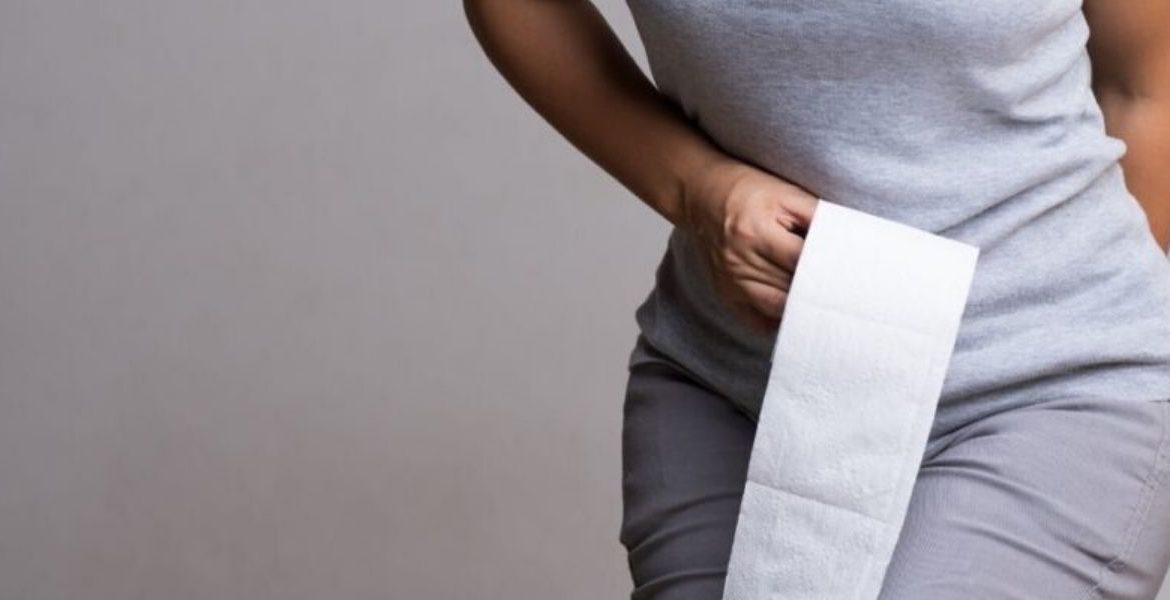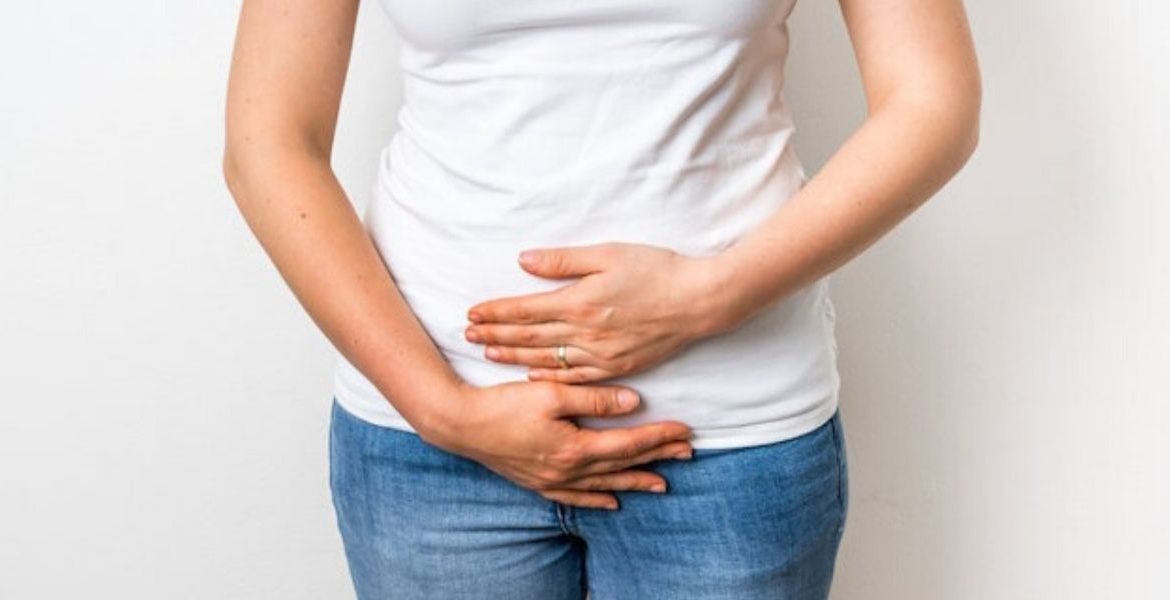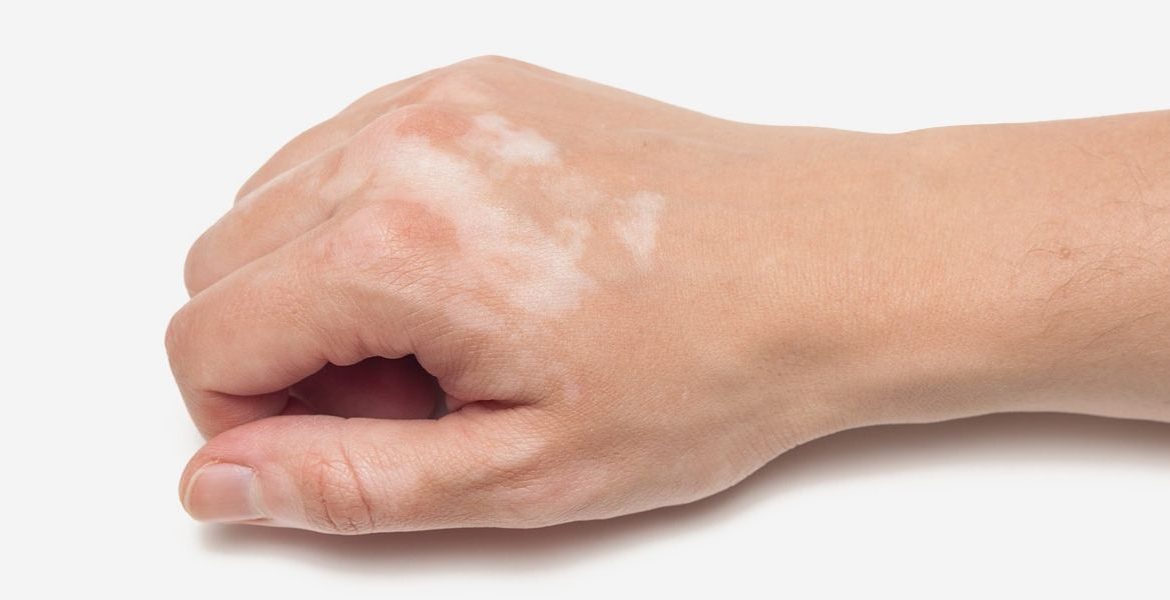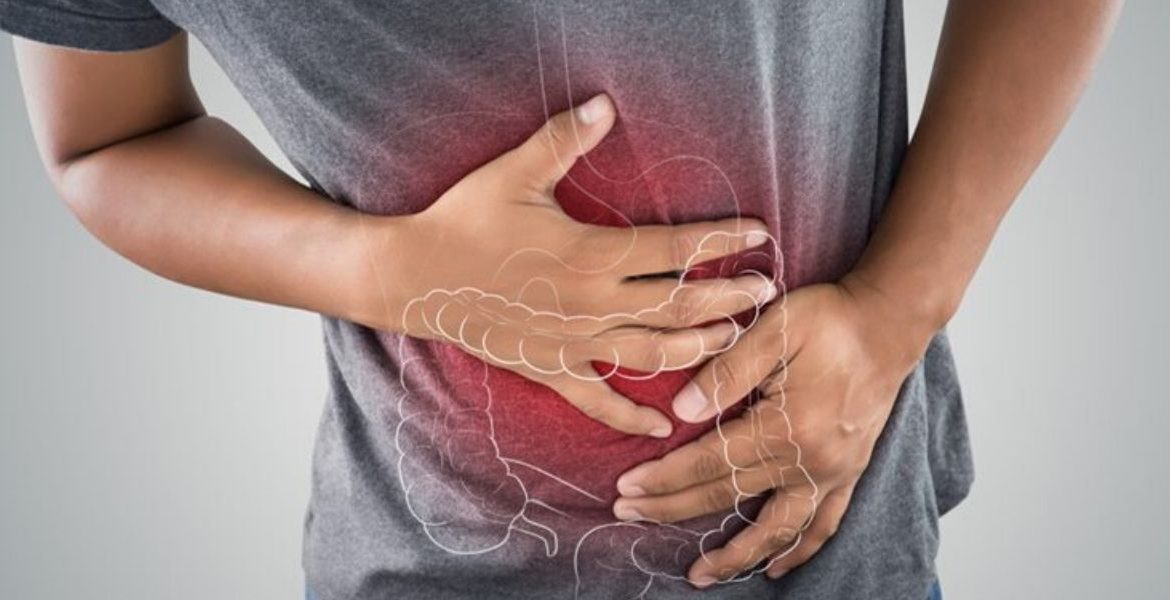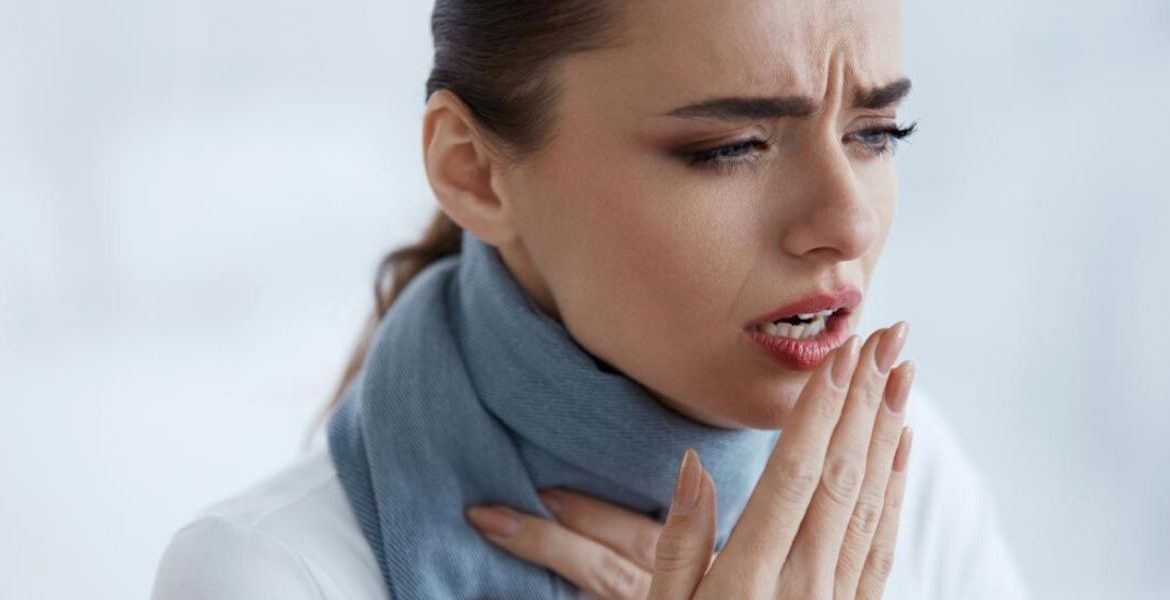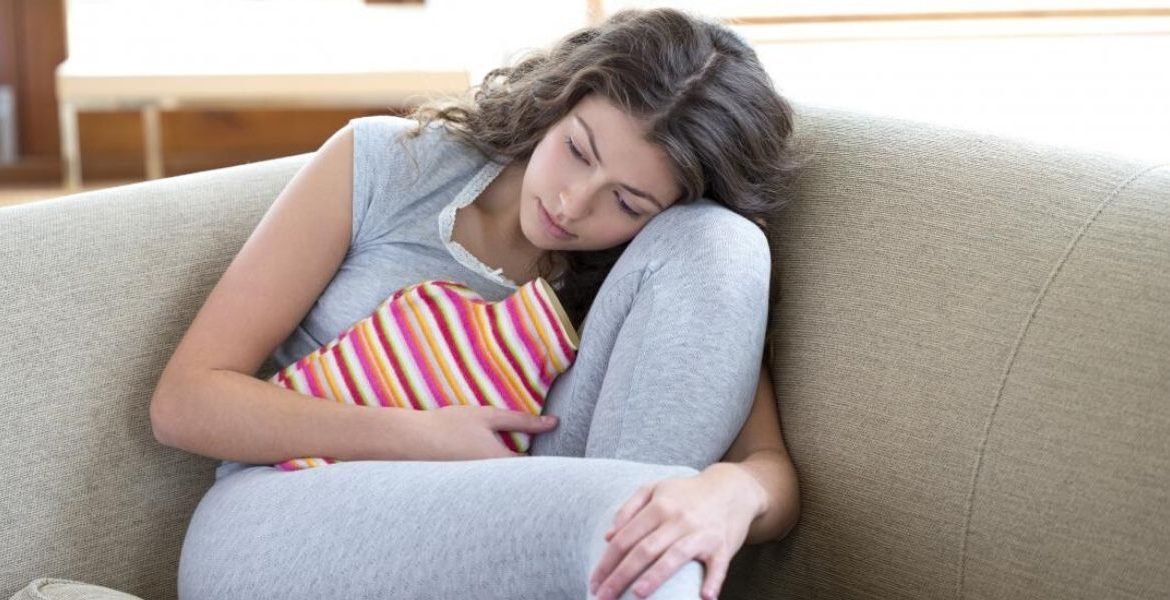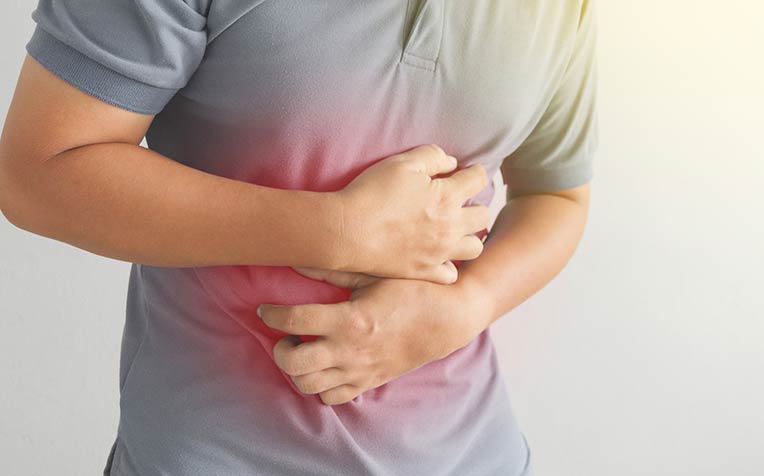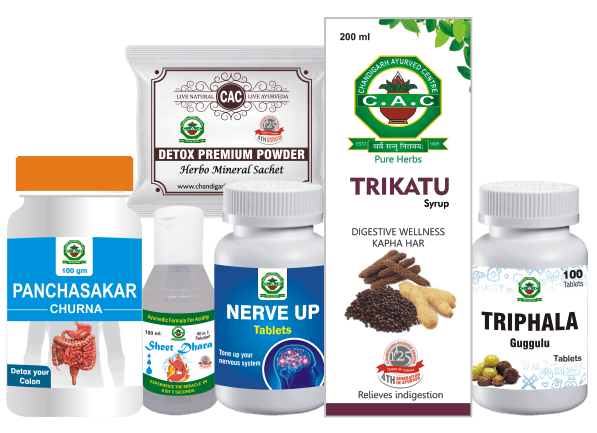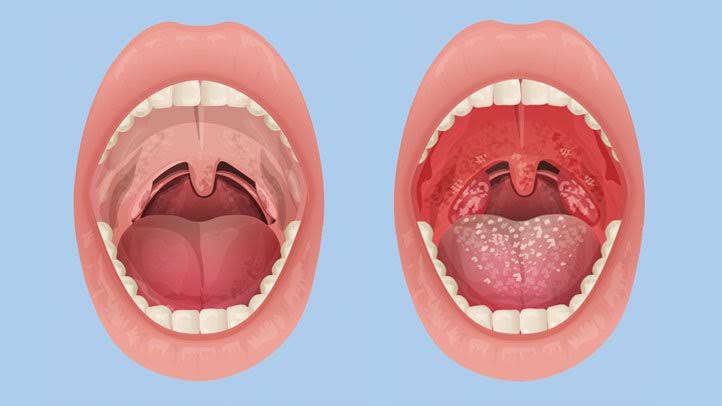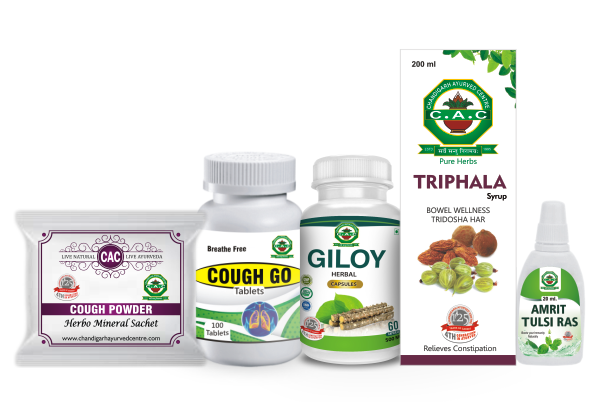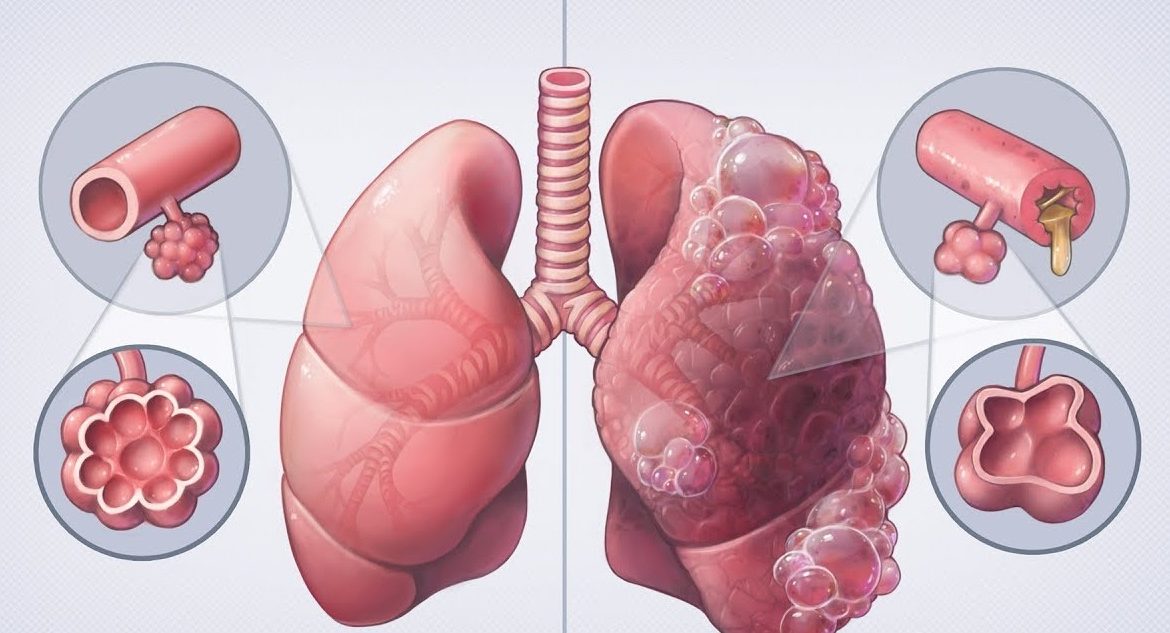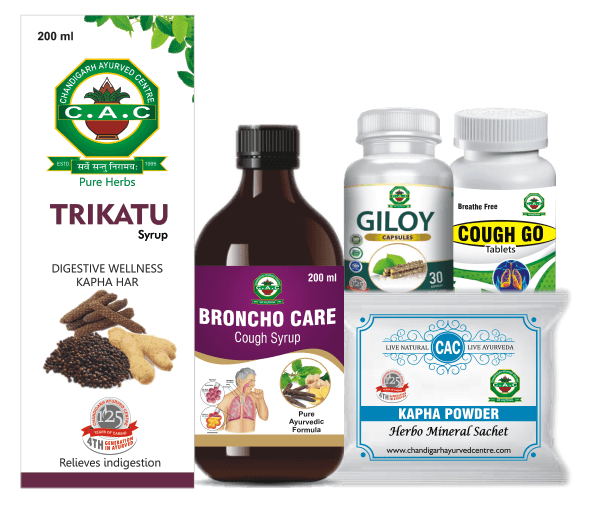Author Archives: Dr. Vaidya Karanvir Singh
IS AYURVEDIC TREATMENT GOOD FOR PILES
- February 8, 2020
- Posted by Dr. Vaidya Karanvir Singh
- 0 Comment(s)
Yes, Ayurvedic treatment is good and beneficial for the patients suffering from piles because the herbs used in the treatment will help to manage the symptoms and work on the causes which will help to get rid of the Piles.
In this article, I have shared the symptoms, cause, diet, general guidance, and the Ayurvedic treatment for piles which will help you.
When we talk about Piles we think about the pain, blood, and hemorrhoids because it is the major complaint that is followed by it. A pile is the collection of swollen and inflamed tissues and veins.
The size and place of the hemorrhoids can vary; it can be inside or outside the anus. It is due to chronic constipation, chronic diarrhea, lifting heavy weights, pregnancy, or straining when passing a stool.
A pile is classified into four grades the symptoms and the condition depends on it:
- Grade I: A minor inflammation is felt inside the inner lining of the anus which is not visible.
- Grade II: Condition size and symptoms are worse than Grade 1 piles patient, the hemorrhoids are inside the anus.
- There are chances to get the hemorrhoids pushed out by the pressure while passing of stool and returns back to the same position.
- Grade III: Are known as prolapsed hemorrhoids that are seen and felt outside the anus. One suffering with it feels the skin lumps or tags hanging out of the rectum, the lumps or hemorrhoids can re-enter.
- Grade IV: The hemorrhoids in this grade cannot be pushed back in the anus and needs herbal treatment. They are large in size and remain outside of the anus.
The symptoms are seen and felt in Piles which brings it into notice are-
- Felt hard and painful lump around the anus. It may contain viscous blood. Hemorrhoids with blood are called thrombosed external hemorrhoids.
- One suffering with piles complains about heavy and full bowel even after passing a stool
- Dark red blood is seen after a bowel movement.
- Piles patients complain to have itching, red and sores around the anus
- Pain while passing stool.
- Too much of bleeding leads to anemia
- Infection
- Fecal incontinence or an inability to control bowel movements
- There are chances to have an anal fistula in or near the anus
Causes
- A blood vessel around the anus and in the rectum stretches under pressure and leads to inflammation or bulge, forming hemorrhoids or lumps. The cause of it is:
- Chronic constipation
- Acute diarrhea
- Lifting heavyweights
- Pregnancy
- Injury while passing a stool because of chronic constipation
- Inherited and increases with age.
According to Ayurveda
In Ayurveda piles are known as “Arsha” it is because of the vitiation of all three doshas (Vata, Pitta &; Kapha). Vitiated Pitta dosha leads to the accumulation of Ama or toxic matter in the digestion tract and Vata causes obstruction of channels.
All this leads to a mass hanging down from the anus. Chandigarh Ayurveda Center offers a “Piles Relief Kit” which is a combo having multiple medicines that work together to treat piles.
All the medicines under this pack are free from chemicals and side effects. Our nature is full of herbs and the herbs are used in medicine form by Ayurveda that provides amazing results in the managing and treating piles.
Arsho Fit Capsule
It is a form of Ayurvedic capsules for piles that has the properties to balance the vitiated Kapha & Pitta dosha in the body.
These are combination of Raswanti, Ritharakh, Kattha, Bakayan, Ral, Chitrak, Nimboli, Shubhra Bhasma, Nag Keshar, Shodhit Suhaga, Shodhit Gairik, Sonth etc.
These capsules are helpful in giving relief from itching, inflammation, bleeding piles, mass tags, swelling around the anus, pain in the anal region, and bleeding associated with piles.
Regular use of these capsules is beneficial in treating piles. Arsho Fit capsules are pure Ayurvedic.
Prescribed Dose is 2 capsules twice daily with plain water after meals.
Pilewin Tablets
These herbal tablets are pure and 100% natural extract of Naga param. Regular use of Pilewin Tablets shows brilliant results in both external and internal piles. These properties and function of this herbal are-
- Reduce the bleeding piles and shrink the pile mass.
- Balances Pitta dosha in the body.
- Reduces the venous engorgement.
- It provides instant relief from pain.
- Useful in both internal and external hemorrhoids
- Shrinks pile mass and reduce the haemorrhoidal congestion
Prescribed Dose is 2 tablets twice daily with normal water.
Panchsakar Churna
It is a form of herbal powder and its preparation is classical by using multiple herbs in its formulation- Shunti, Haritaki, Pippali, Trivrit, and Sauvarchala lavana.
The churna helps in balancing and pacifying the Vata and Kapha dosha which are responsible for the causes that lead to piles.
Panchsakar Churna is beneficial in treating constipation, bloating, and regular use of this churna give effective result in loss of appetite, abdominal pain, also bloating which is a regular complaint by piles patient.
Prescribed Dose is 1 teaspoonful once daily with warm water at bedtime.
Triphala Syrup
Triphala is known for its wound-healing quality. The used herbs in the formulation are Haritaki, Bibhitaki, and Amalaki having the properties which help in the smooth functioning of the stomach.
The syrup has outstanding results as it is rich in all the qualities of the used herbs in it.
Triphala is available in powder, juice, tincture, extract, capsule, or tablet form and is increasingly found online and in many natural food and supplements stores.
- Triphala syrup helps in
- It helps in cleaning the bowel naturally.
- Maintains the overall digestive system
- Beneficial in chronic constipation related to the piles patient.
- Useful in healing the inflammation of fistula- in – ano.
- Improves digestion
- Helps in weight loss
- Boosts the immune system
- Protects the hair and skin
- Improves the vision
- Natural antioxidant
Prescribed Dose is 2 teaspoonful of this syrup twice daily with normal water
Detox premium powder-
A major function of the powder is clear from the name; it helps in detoxification of the toxins from the body and decreases the effects of strong medication.
- Helps in effective digestion
- Helps to fight against harmful elements of unhealthy food
- Maintain a healthy digestive function.
Prescribed Dose is 1 sachet twice daily with normal water.
Along with these Ayurvedic medicines you are suggested to follow a good diet & the home remedies that are mentioned below:
- Fruits are always good for health. Fruits should be included in the diet because they are rich in fibrous like-apple, papaya, watermelon, muskmelon, pear, etc.
- Fresh juice can be consumed of apple, carrot, beetroot, and pomegranate because it helps in managing the symptom bleeding piles.
- Buttermilk with roasted cumin seeds powder, a pinch of black pepper powder & black salt in it will be helpful.
- Consumption of fresh vegetables in your diet such as bottle gourd, ridge gourd, pumpkin, bitter gourd, coriander leaves, spinach, etc will be helpful.
- Intake water to stay away from constipation.
- Lukewarm milk with three teaspoonfuls of castor oil in it before bed will help you from chronic constipation.
- For piles patients Radish juice is also good so, have a cup of fresh juice it helps to manage the symptoms
- Coconut oil is beneficial if you are having itching, irritation, swelling, & inflammation in the anal region.
- A fig is helpful as it gives relief from piles due to its fiber content. Take two to four dry figs soaked overnight empty stomach.
- The fiber content present in Psyllium husk makes the stool soft. Increased fiber in the body will reduce gas, stomach cramps, irritation, itching, & bleeding piles. It is advised to intake a teaspoonful of Psyllium husk with a glass of milk or a bowl of curd. It can be repeated 1-2 times daily to get relief.
- Start consuming green coconut water on a daily basis it will help in detoxification of the body. This drink will provide energy & remove weakness.
- The properties like antioxidant, analgesic, anti-inflammatory are found in an Aloe Vera which is a herbal plant. If a person is suffering from irritation, pain, itching or swelling in the anal part can rub a piece of fresh aloe vera on it.
To have speedy recovery do follow the General guidelines
- Try sitz bath daily 2-3 times-soak anal area in a tub with plain or like warm water. The sitting has to be for 15-20 mins
- Keep the anal area clean and dry
- no for perfumed tissues or dry papers
- use cold packs it will give relief from pain
- avoid constipation so intake fibrous diet
- intake plenty of water
- avoid junk and tinned food
- do not ignore the urge to pass the motion
- avoid sitting on a hard seat for a long time
- be active and regular in exercise
- In case you are heavy by weight try to shred your weight, it will help you to deal with piles.
CAN PCOS BE CURED BY AYURVEDA
- February 8, 2020
- Posted by Dr. Vaidya Karanvir Singh
- 0 Comment(s)
I believe that all of the health ailment can be treated by Ayurveda because Ayurveda believes that our body is ruled and governed by Tri Doshas- Vata, Pitta, and Kapha dosha.
When any of the dosha gets imbalanced or vitiated it results to health ailments. Ayurveda is an ancient method of treatment which included the treatment through herbs.
We are lucky to have Ayurvedic doctors who are continuing the tradition and treating through herbs following the traditional way of treatment.
As per Ayurveda
In Ayurveda, Acharya Sushruta has stated that Bandhya is a type of yonivyapada that has symptom like amenorrhea or oligomenorrhoea.
Similarly Acharya Charka has also described Arajasaka is a Yonivyapada which indicates Amenorrhea.
Ayurveda says our body is managed and governed by three forces which are called vatta dosha, pitta dosha, and kapha dosha, all three moves within the body and help & support the body in performing essential bodily functions.
Imbalance and vitiation in these forces become the cause of diseases. According to Ayurveda PCOS is consider to be the result of imbalanced Vata Dosha particularly Apan vata is responsible, other two doshas is also responsible but major is vata.
As per dosha the symptoms of PCOS are-
- Vata dosha is major which is visible with painful periods, irregular menses, low weight and etc.
- Pitta dosha is also responsible which manifests as hair loss, acne, painful menses, clots, heart problems
- Kapha is predominance and manifests as increased weight, infertility, hirsutism , diabetic tendencies, coldness
Talking about the treatment of PCOS by Ayurveda includes different methods
- Ayurvedic Therapies for PCOS
Below are the Ayurvedic therapies that are practiced to treat PCOS:
- Basti (Herbal Enema)
This procedure includes enema by medicated oil or decoction, which is done through the rectum. Basti helps to balance and pacify vitiated vatta, which gives which is cause of PCOS.
- Virechan (Herbal cleansing)
This therapy helps in flushing out the toxins such as vitiated pitta out of the body. The therapy includes herbal mixture that encourages the bowel movement in order to throw out the doshas through the rectum.
- Vaman (Herbal vomiting)
Vaman is the therapy which includes the procedure to flush out the Kapha from the body. Vaman includes the herbal medicines to let the toxins come out of the body through vomiting. The procedure is painless, helps in detoxification, and balances the hormones.
PCOS can also be treated and managed through diet- 7 Tips for Polycystic Ovary Syndrome
- Try a Low- GI Diet
- Don’t skimp on breakfast
- Eat enough healthy fats
- Cut down on carbohydrate
- Eat enough quantity of lean protein
- Stay active
What is polycystic ovary syndrome (PCOS)?
Polycystic ovary syndrome (PCOS) is a hormonal disorder which results in enlargement of ovaries and formation of small cysts on the outer line of ovaries.
PCOS is the disorder that affects a woman’s hormone levels which leads to over production of hormones higher-than-normal amounts of male hormones.
This imbalance results to skipping of menstrual periods in PCOS and becomes a big reason for no conception.
The symptoms which clear that one is suffering with PCOS:
- Acne, oily skin, and seborrhea.
- Enlarged ovaries with multiple small cysts,
- Oligomenorrhea or amenorrhea
- Lack of ovulation which leads to infertility
- Abnormal bleeding during periods
- Facial hair growth
- Problems with blood sugar regulation
- Male-pattern hair loss and fat deposition
- Weight gain or obesity
- Hyper pigmentation on neck and face
Causes or the factors that may play a role:
- Excess insulin- Function of Pancreas is to produce hormone called Insulin which allows cells to use sugar which gives energy to the body.
- Excess of anything is dangerous same goes for insulin, when it is more than the requirement it may increase androgen production that brings complication in ovulation.
- Low-grade inflammation-The term itself describes that is related to production of white blood which has the function to fight against infection.
- PCOS is a type of low-grade inflammation that encourages polycystic ovaries to produce androgens that can lead to heart and blood vessel problems.
- Heredity- PCOS is also can be due to hereditary reason.
- Excess androgen-Over production of androgen by ovaries, can result in hirsutism and acne.
PCOS can be lead to these complications which can be reason of other disease-
- Infertility
- Gestational diabetes or pregnancy-induced high blood pressure
- Miscarriage or premature birth
- Severe liver inflammation caused by fat accumulation in the liver
- Metabolic syndrome — too many problems together like high blood pressure, high blood sugar, and abnormal cholesterol or triglyceride levels which can be risk of cardiovascular disease
- Sleep apnea
- Depression, anxiety and eating disorders
- Abnormal uterine bleeding
- endometrial cancer
The symptoms and causes of PCOS can be managed and treated if one follows the proper process of medication which includes the diet, yoga, and Ayurvedic medicines.
Chandigarh Ayurveda offer the combination of medicines which the properties to work for the treatment of PCOS. The offered medicines are 100% Ayurvedic and chemical-free.
Kachnaar Guggul
This is a classical herbal tablets it is in use since years for the treatment of granthi dosha. Preparation of this herbal tablet is done by Pippali, Bibhitaki, Haritaki, Shunthi, etc.
The used herbs have the properties to shrink the size of the cyst and remove it from the body. Pain, swelling, discomfort, bloating, revitalize the cells, and rejuvenate a person.
Advised dose is 2 tablets twice daily with normal water.
Stri Vyadhihari Tablets
Shatapushpa, Karpasamoola, Latakaranja beej, etc are the herbs used in formation of these herbal tablets. Stri Vyadhihari tablets have the properties to pacify the vata and pitta dosha that are responsible for the problems faced by women.
This tablets work in treating the ailments suffered by women issues like dysfunctional uterine bleeding, infertility, ovarian cysts, miscarriage, menopause, recurrent absorption etc.
The tablets are antispasmodic, analgesic, anti-inflammatory properties and also maintain the hormonal imbalance by nature.
Advised dose is 1 tablet twice daily with normal water.
Stri-Poshak Syrup
It is considered as a general uterine tonic. This is combination of Shatavari, Ashwagandha, Ashok chall, Lodhra chall, Haritaki, etc in form of Ayurvedic syrup which has the properties to maintain and manage all signs and symptoms of ovarian cyst patients.
This syrup provides complete nourishment to the women; it makes the reproductive system strong and treats all types of ovarian problems. The syrup also helps in relieving the abdominal pain, sweating, tiredness, nausea etc.
Advised dose is 2 teaspoonfuls twice daily.
Rajahpravartani Vati
This herbal tablet encourages the ovulation and removes the ovarian cysts. It is a classical formulation prepared using Kaseesa, Tankana, Kanya, and Ramatha.
This herbal tablet helps in balancing the Kapha and Pitta dosha also beneficial in reducing the depression, heaviness and pain, nausea, vomiting, painful bowel movements, etc.
Advised dose is 2 tablets twice daily with normal water
Dos and Don’ts as per Ayurveda to be taken care in PCOS
- Just like in the case of any other treatment, Ayurvedic treatments for PCOS require you to follow certain parameters for an effective treatment. Given below are some dos and don’ts for PCOS patients.
- It is recommended that you cut down on the intake of milk and milk products with the exception of buttermilk.
- It’s better to opt for low-fat milk, it should be boiled adding a pinch of ginger or turmeric before as it will have the property to decrease the Kapha.
- Follow a natural sleep pattern, and refrain from sleeping in the afternoon as it may interrupt your sleep cycle in the night.
- Say goodbye to all sorts of junk food.
- It’s advisable to restrict the consumption of red meat, deep-fried food, and eggs as much as you can. Can take fish once in a while.
- Sugar increases Kapha so avoid sugar products. Can replace sugar with honey only if required as honey reduces Kapha.
- You are allowed to consume beans, but avoid the intake of nuts.
- Potatoes can lead weight gain and affect the parameter of blood sugar so avoid it.
- It is recommended that you avoid undertaking any physical or mental work that can cause undue stress.
- Restrict your use of contraceptives.
- It’s recommended that you have a balanced diet.
- Can consume wheat or rice but in less quantity.
- Include herbs such as cinnamon, garlic, and fenugreek in your diet.
- Drink herbal teas such as spearmint tea or green tea.
- Avoid smoking, alcohol, and narcotics as these are known to impact menstrual cycles negatively.
There are few question that are regularly asked by the women suffering with PCOS.
Is PCOS serious?
If it is not treated, over time it can lead to some serious health issues such as infertility, diabetes, heart disorder, and even cancer in women.
In PCOS there is the formation of cyst on the outer layer of ovaries which can further cause a drastic hormonal imbalance in your body.
Can I get pregnant with PCOS?
If you suffer from PCOS, it is hard to get pregnant, because during PCOS periods get disturbed and there is no proper ovulation.
But you don’t worry it’s not permanent you can cure it with the help of some herbal medicines for PCOS which are offered by Chandigarh Ayurveda are combination of all beneficial herbs that have the properties to treat the PCOS and Kanchnaar Guggul, Stri Vyadhihari Tablets, Stri-Poshak Syrup, and Rajahpravartani Vati.
Is PCOS life-threatening?
PCOS is a hormonal disorder which can be further cause of other health ailments like Diabetes Mellitus (insulin resistance body), stroke, and cardiovascular disease.
It can also be coupled with endometrial and uterine cancer. So, yes we can say that PCOS is a life-threatening disease to some extent.
Will taking the pills help PCOS?
Many modern doctors suggest that birth control pills can manage the menstrual cycle but I would suggest to take Ayurvedic medicines like Kanchnaar Guggul, Stri Vyadhihari Tablets, Stri-Poshak Syrup, and Rajahpravartani Vati because these free from side effects.
Avoid taking birth control pills for PCOS; sometimes it can cause severe side effects.
For Treatment – PCOS RELIEF KIT
AYURVEDIC TREATMENT FOR IBS
- February 8, 2020
- Posted by Dr. Vaidya Karanvir Singh
- 0 Comment(s)
Today in this era when people are too much into junk food and disturbed lifestyle, usually complain about IBS (Irritable Bowel Syndrome) which affects our large intestine.
IBS is an idiopathic, functional, gastrointestinal disorder which is characterized by abdominal pain and altered bowel habits.
According to Ayurveda, Agni (AMA) is the base (mool) of life. As per Ayurveda “Jathar Agni” is digestive fire which is present in stomach and duodenum.
Grahani is the main seat of Agni and both are interdependent. Ayurveda says, the small intestine is correlated to Grahani, because of its properties to restrain the food that we eat.
Digestion and absorption of food are done in Grahani. It is nourished by the strength of Agni. ‘Mandagni’ is imbalanced or vitiated form of Agni, which means weak digestive fire.
The food is not digested properly due to Mandagni that leads to AMA Dosha (accumulation of toxins), it results in most of the diseases.
Irritable Bowel Syndrome treatment involves alleviating the aggravated body energies, restoring the function of the digestive system and the elimination of accumulated toxins.
A major cause of this disorder is stress; lifestyle guidance and herbs to nourish the mind and nervous system is part of treatment.
SYSPTOMS WHICH BRINGS IBS INTO NOTICE
- Abdominal pain,
- Cramping or bloating is on and off
- Excess gas
- Diarrhea or constipation
- Mucus in the stool
- A feeling of unclear bowel
- Flatulence
WHAT ARE THE REASONS OR CAUSES WHICH RESULTS TO IBS
- Muscle contractions in the intestine-The intestines are the layers of muscle that contract as they move food through your digestive tract. The contractions are stronger and long-lasting than normal which can cause gas, bloating and diarrhea. Weak intestinal contractions can slow down the food passage which leads to hard and dry stools.
- Nervous system– Abnormality of the nerves in the digestive system may result in the discomfort that is abdominal stretches which is because of gas or stool. The coordination between brains and intestines be very weak which can result to disturb digestive system, resulting in pain, diarrhea or constipation.
- Toxins accumulating in tissue blocking the circulation.
- Poor nutrition, like consumption of heavy food, overeating, consumption of improper food, consumption of too many fluids or fluids that are too cold.
- Poor digestion as a result the intake of improper food at improper times, or skipping meals
- Imbalance of the nervous system
- Accumulation of physical and mental stress
- Low immunity (low ojas)
- Disruption of natural biological rhythm
WHEN SHOULD ONE SEE A DOCTOR
I would suggest that if one is facing any of below shared symptoms of IBS should always consult the doctor and get treated-
- Weight loss
- Diarrhea at night
- Rectal bleeding
- Iron deficiency anemia
- Unexplained vomiting
- Difficulty swallowing
- Persistent pain that isn’t relieved by passing gas or a bowel movement
HERBAL REMEDIES FOR IBS
As per Ayurveda IBS is because of imbalance and vitiation of doshas (Vata, Pitta & Kapha). Chandigarh Ayurveda offers the best combination of effective herbal remedies for IBS which will work together for Ayurvedic treatment of IBS “Grahani” (Irritable Bowel Syndrome).
The Ayurvedic medicines provided by us are 100 percent pure and natural products. All of them is safe to use and free of side effects.
The formulation of the medicines is done under the supervision of professional and certified doctor. All the medicines prescribed are made without additional chemicals or additives or preservatives in it.
Pittashekhar Rasa
It is an Ayurvedic medicine in form of herbal tablets for IBS which are made using- Sootshekhar rasa, Bilva majja, Kalmegh, Shankha bhasma, Kapardika bhasma, etc which will work together to treat IBS.
Pittashekhar Rasa functions by balancing the Pitta dosha. When it is used regularly under the guidance of physician it improves digestion, enhances appetite, carminative, reduces acidity, prevents gastric ulcers, reduces heartburn, acts as a laxative, & reduces pain in the abdomen, etc. Pittashekhar Rasa
Is helpful in balancing Vata, Pitta & Kapha
Medicinal Properties
- Aam Pachak (Detoxifier)
- Carminative
- Digestive Stimulant
- Antiulcerogenic
- Antacid
- Cholagogue (promotes the discharge of bile)
- Antispasmodic
- Cardioprotective
- Antianginal
Dose: 1 tablet twice daily with normal water.
Agnimukha Churna
This Churna is an Ayurvedic appetizer It is a herbal churna prepared using multiple herbs as ingredients – Vacha (Acorus calamus), Pippali (Piper longum), Sonth (Zingiber officinale), Ajwain (Trachyspermum ammi), Haritaki (Terminalia chebula), etc.
The used herbs work together in form of churna to balances Vata & Kapha doshas. Agnimukha Churna is beneficial in case of indigestion, anorexia, abdominal pain, constipation, loss of appetite, flatulence, bloating, intestinal gas, IBS, increases hunger and digestive capacity.
The churna reduces flatulence, abdominal distension, and intestinal gas. It improves bowel movement and helps to get a complete bowel evacuation.
Therapeutic Indications
- Loss of appetite
- Flatulence
- Bloating or abdominal distension
- Intestinal gas
- Indigestion
- Constipation
- Incomplete bowel evacuation
- Spleen disorders
- Non-bleeding hemorrhoid
- Abdominal pain due to gas
Dose: A half teaspoon of this churna twice daily with normal water.
IBS Care Sachets
These herbal sachets for IBS are in powder form with all properties of the used herbs as ingredients. The herbs used in its preparation gives calming effect on the stomach and are-Shankh bhasma, Sutshekhar ras, Praval pishti, Shukta pishti, Giloy, Kamdudha ras, Shvet parpati.
The sachet works in balancing Pitta dosha of the body and maintains proper digestion of the body.
The properties of IBS Care Sachets are-
- Anti-inflammatory,
- Antioxidant,
- Antacid
Dose: One sachet twice daily with normal water.
Amlapitta Mishran
This is an Ayurvedic preparation in liquid form prepared using Vasa (Justicia adhatoda), Guduchi (Tinospora cordifolia), Nimba (Azadirachta indica), Triphala (three myrobalans), Patol (Trichosanthes dioica), Yashtimadhu (Glycyrrhiza glabra), Chirayta (Swertia chirayta), etc which normalize the Pitta dosha in the body.
This syrup has the property to strengthen the metabolism and enhances the action of Agni. It is also beneficial in heartburn, abdominal pain, nausea, bloating, belching, etc related to IBS.
Dose: 2 teaspoonfuls twice daily.
TYPES OF IBS
As per the symptoms IBS is catagariosed into different types
- Predominant IBS-Constipation: This complains is due to vitiated Vata dosha which leads to dry skin, throat and mouth. When the IBS get chronic it results to anal fissures, complain of less sleep, anxiety.
- Predominant IBS- Diarrhea-This is due to imbalanced Pitta dosha. The imbalance may result to inflammation, vicious smelly excreta, and agitated.
- Predominant IBS-Dysentry- This is again due to imbalanced dosha, in this case Kapha dosha is responsible. This type of IBS leads to mucus in bowel, drowsiness, and nausea which results to weakness.
- Complex IBS- Disturbed and imbalanced Tri doshas – Vata, Pitta, and Kapha are the reason of it. One suffering with this has the symptoms of all three types mentioned above.
- Accrual IBS– Unevenness and vitiation of Tri doshas – Vata, Pitta, and Kapha are the cause of it. In this category paitents complain to have sticky, loose, oily with undigested food particles in the stool. In certain cases constipation is followed by loose motion.
- Tympanitis Predominant IBS (Ghatiyantra grahni)-In this type patients complains about the growling sound from their abdomen and escalated bowel followed with undigested food.
To get rid of the symptoms and suffering you are suggested to follow below given precaution swith prescribed medicine –
- Avoid caffeinated drinks- coffee / tea, alcohol and carbonated drinks.
- No to-Heavy meals, milk products and chocolate.
- Never suppress the urge to urinate or defecate.
- Make it a point to have your food while it is still warm.
- Consumption of buttermilk as much as possible.
- Avoid food when going through indigestion.
- Prefer boiled vegetables- gruel with a bit of black pepper, etc.
- Drink water at a lukewarm temperature
- Diet to be rich in calcium
- Try to get the required hours of sleep because it is essential for proper and healthy function of body.
- Never stay empty stomach, always should eat at regular breaks.
Home remedies for IBS always are helpful and can give temporary relief from the symptoms of IBS. Use of these home remedies will never be the reason of reappearance of the symptoms.
- Take one teaspoon of Psyllium Husks (Isabgol) with half cup of fresh yogurt one hour after dinner.
- Prepare tea by boiling one teaspoon of flaxseed in a cup of water. Drink it at night.
- Mix 1 teaspoon each of cinnamon, ginger and cumin powder with honey to make a paste. Take 1 teaspoon 3 times a day
For Treatment – IBS CARE KIT
What should you eat and avoid in leucoderma?
- February 8, 2020
- Posted by Dr. Vaidya Karanvir Singh
- 0 Comment(s)
Might be you never heard the term leucoderma. But about 0.5 to 2% of the world’s population is recently suffering from this disease.
Believe or not, every disease has somewhere connected to what we eat. This problem also has.
But before discussing about what we should eat and what not in leucoderma, let’s explore what is the problem is actually about?
Leucoderma
It is a leucoderma skin disorder in which the affected person’s skin found to have white patches. It does not cause any pain or itching and not even spread person to person i.e.
It is not contagious. This disease occurs because body at that particular site is unable to produce melanin (a molecule that gives color to the skin). Some person also knew this problem with the name of vitiligo.
However, sometimes this skin condition might be wrong judged by the people as there are also other skin problems that also show the signs like this for instance, white scar, hypopigmentation, or nevus depigmentosus.
So, how can you identified that you are suffering from leucoderma?
The white patches in leucoderma –
Increase gradually in size
Looks milky white under UV light
Has an outline darker than the skin
Shape is irregular
So, what are the symptoms of leucoderma?
Milky white patches
Change or loss in the color of inner layer of eye
Graying of hair on eyelashes, eyebrows, and scalp
The pattern of this disease can be seen in three ways: generalized, segmental and focal. In generalized pattern, the color loss extent across many parts of the body, basically in a symmetrical way.
In segmental pattern the color loss arise only one side of the body and in local the skin color is limited to only some parts of the body.
But what is the reason behind leucoderma?
The exact cause of this disease is still under investigation but as per some researches, this problem occurs due to:
Faulty immune system
When the body self-defense mechanism mistaken color producing cells as foreign particles, the synthesis of melanin get hinder. This is one of the major causes behind this skin condition.
Hereditary
If parents suffer from the symptoms of leucoderma, then the risk of this disease gets higher for the children.
Nerve damage
This happen in case of segmental pattern, where the area of skin that comes in contact with dorsal root of spinal cord get affected.
Oxidant-antioxidant system
This system can also be the reason of disturbed melanocytes production and cause white patches on the skin.
These four reasons can be the cause behind irrupted melanin synthesis and finally the leucoderma in skin.
There are medicated ways, through which this disease can be managed, but as per ayurveda, the food can play a significant role in maintaining leucoderma because correcting food habits, you can beat the most prevalent cause of leucoderma which is disturbed immune system of the body.
So, first let’s explore what type of food should totally avoid in leucoderma?
- Citrus fruits
Fruits like oranges, lemon, lime, and kiwi should avoid, because these are rich in vitamin c, which is a potent de-pigmenting agent.
- Soda bi carbonate present in aerated drinks should also not consume.
- Other food items like garlic, onion, tomato, tamarind, blueberries, papaya, amla, pomegranate, brinjal, pickle, green chili, grapes, red meat, fish, oily-fried food and curd should also avoid strictly.
These are those food items which are totally avoidable in case of leucoderma. As these food items can make condition more aggravated. The immune system cause more issues and it can be the biggest problem in treating leucoderma.
But, there are some food items from which a person suffering from leucoderma can have but in limited form.
What type of food should have but only in a limited amount or as per dietician recommendations?
Milk products, chicken, fermented food, coffee and chocolate.
Now the next question that is running in everyone’s mind is then what should we eat in leucoderma?
Vegetarian source of copper, vitamin D3 and vitamin B12, turmeric, beetroot, carrot, radish, omega 3 fatty acids, figs, dates, apples, banana, leafy vegetables like lettuce and kale, and chickpeas.
These foods are best to have during leucoderma. These help to correct the immunity system of the body and improves the synthesis of melanin.
But acquiring good eating habit is not enough to naturally control the leucoderma, rather the whole lifestyle also should be adopt as per to correct the problem.
So, what lifestyle changes should be needed to adopt in leucoderma?
Avoid a direct contact with sun, especially during its peak hours.
Say no to swimming.
Don’t use rubber or plastic wear.
Never use bindi or stickers.
Don’t wear tight clothes or undergarments.
These are the things which you need to take care of if your are also suffering from leucoderma.
You only need to understand one thing and that is our lifestyle, especially our diet is the basic element which can make a condition worse or better. So, never go for foods that contribute in aggravating the leucoderma.
Hope you have understood what leucoderma is, how important to manage this problem and what should eat and what not during this condition.
In last, let’s find out the answer of most prevalent questions related to leucoderma –
At what age, the chances of leucoderma onset are highest?
Answer: from the ages of 10 to 30, the risk of having leucoderma is high.
Is leucoderma also having any association with any disorder?
Answer: yes, it has a significant association with the problems, diabetes, mellitus, thyroid, pernicious anemia, and addison’s disease.
Does vitiligo patients are more prone to skin cancer?
Answer: Not really. But such patients’ skin is sensitive and can affected more easily as compared to the normal skin.
Should people with leucoderma use sunscreen?
Answer: Without any second thought, this is one of the best way to protect your skin. A broad spectrum medicated sunscreen protects the skin from harmful uv rays and pollutants. Just make sure to buy a sunscreen only after consulting your doctor.
For Treatment – LEUCODERMA CARE KIT
WHAT IS THE TREATMENT OF ULCERATIVE COLITIS
- February 8, 2020
- Posted by Dr. Vaidya Karanvir Singh
- 0 Comment(s)
Ulcerative Colitis is an inflammatory bowel disease. We can say it is a formation of ulcers in the inner lining of intestine (which is called colon), rectum or inflammation in both.
In the present era it is one of the most common health ailments which people are suffering.
There is no age limit, people in any age group can complain to have the symptoms of it.
If the symptoms of Ulcerative Colitis are not controlled and managed the disease can be life threatening. As per modern medicines the only way to treat is getting operated.
The disease has symptoms which are easily noticeable and needs to be taken care also work of the causes which is reason of it before the problem gets chronic Ulcerative Colitis.
Symptoms
The symptoms varies, which completely depends on the severity of inflammation and the soars where it occurs. The Signs and symptoms which are seen in one suffering with Ulcerative Colitis are:
- Diarrhea which is with blood or pus
- Abdominal pain and too much of cramps which leads to diarrhea
- Rectal pain
- Rectal bleeding —blood with stool
- Urgency to defecate
- Inability to defecate despite urgency
- Weight loss
- Fatigue
- Fever
- In children the symptoms are more about same but it hampers the growth also.
One in chronic condition can also complain of joint pain, swelling in joints, nausea, skin problem, inflammation in eyes, and mouth sores.
Causes
As per modern medicines there are no particular reasons for Ulcerative colitis.
The main cause of the disease is autoimmune factors, food allergies, collagen disorders, genetic factors and infection are some of the factors that cause inflammation in cases of Ulcerative Colitis.
Ayurveda says, all the factors which are cause of imbalance in Pitta doshas are responsible for this problem.
The cause of Ulcerative Colitis can be genetic reason, stress, less sleep, consumption of irritating food, alcohol, and junk food.
As per Ayurveda
Our body is ruled and run by tri doshas-Pitta doshas, Vata doshas, and Kapha doshas.
As per Ayurveda Ulcerative Colitis comes under “Purishavaha srotas”.
Imbalance or aggravation of (Vata, Pitta & Kapha) doshas in body leads to chronic Ulcerative colitis which is the cause of “Raktatisara”.
Ayurveda says production of “AMA” is when food is not digested properly and the fermentation of food starts in the intestines.
Agni is the digestive fire when it’s Low this results in the formation of “AMA”.
Chandigarh Ayurveda brings you the most beneficial Ayurvedic medicines for Ulcerative Colitis which work in combination to treat Ulcerative Colitis.
In preparation of these medicines best quality of herbs are used in its preparation.
The medicines are made on the principles of Ayurveda. The medicines offered by Chandigarh Ayurveda are natural, pure and vegetarian with no chemicals, additives and preservatives which make it free from side effects.
Ayurvedic Medicines prescribed for the treatment of Ulcerative Colitis are –
- Ulcerative Sachet Dosage: 1 sachet twice daily with normal water.
- Pitshekhar Ras Dosage: 1 tablet twice daily with normal water.
- Kutaja Parpati Vati Dosage: 2 tablets twice daily with normal water.
- Noni Capsule Dosage: 1 tablet twice daily with normal water.
- Amalpitmishran Dosage: 2 teaspoon twice daily.
Ulcerative Sachet
It is a combination of herbs in powder form. The herbs used in the formulation of the herbal powder works together to treat and manage the symptoms of Ulcerative Colitis.
Used herbs in it are Prawal pishti, shukta pishti, Giloy satv, kehrva pishti, Jahar Mohra pishti, akik pishti, sutshekhar ras, shankh bhasma, kamdudha ras, and moti bhasma.
Prawal Pishti (Coral Calcium)
Is loaded with properties which are beneficial in treating many health ailments.
It gives cooling and calming effect to the body which gives good results in Ulcerative Colitis. The medical properties of it are-
- Antacid (reduces acid production in the stomach)
- Anti-inflammatory (its effects are more visible in hepatitis)
- Anti-arthritic (as natural calcium supplement)
- Anti-pyretic (effects are similar to Acetaminophen)
- Digestive Stimulant (when it comes with acidity)
Below is the Ayurvedic property of Prawal Pishti-
| Rasa (Taste) | Madhura (Sweet), slightly Amal (Sour) |
| Guna ( Main Quantity) | Laghu (Light), Ruksha (Dry) |
| Virya (Potency) | Sheeta (Cold) |
| Vipaka (Resultant) | Madhura (Sweet) |
| Dosha Karma (Effect on Humors) | Pacifies all three Dosha – Vata Dosha, Pitta Dosha and Kapha Dosha |
| Organs Effect | Whole Body |
Shukta Pishti
It is bhasma that contains pearl oyster shell calcium. It is beneficial in heartburn, sour taste of mouth, dyspepsia (indigestion), abdominal pain, and pain in liver, anorexia nervosa, loss of appetite, cough, calcium deficiency, osteoporosis, osteopenia, etc.
The bhasma has number of properties which makes it beneficial in different health concerns-
- Potent Antacid
- Antiarrhythmic
- Anti-arthritic
- Antihistaminic
- Anti-inflammatory
- Antioxidant
- Antitussive
- Antiulcerogenic
- Digestive Stimulant
- Alterative
Below is the Ayurvedic property of Prawal Pishti-
| Virya (Potency) | Sheeta (Cold) |
| Vipaka (Resultant) | Madhura (Sweet) |
| Dosha Karma (Effect on Humors) | Pacifies all three Dosha –Pitta Dosha and Kapha Dosha |
| Organs Effect | Stomach, Liver, spleen & Intestine |
Giloy Satv (Guduchi or Amrita Satva)
The herb is beneficial in all types of PITTA (heat) disorders. Giloy helps in treating constipation, digesting AMA (toxin), balancing liver function, etc.
It is having number of health benefits which includes pacification of aggravated PITTA doshas and improves the immunity due to its immuno-modulatory effects.
Medicinal Properties of Giloy Satv (Amrita or Guduchi Satva) have these healing properties.
- Detox (eliminates AMA)
- Mild Antipyretic
- Anti-inflammatory
- Hematogenic (helps in formation of red blood cells)
- Anti-gout
- Immuno-modulatory
- Blood purifier
- Antioxidant
- Carminative
Below is the Ayurvedic property of – Giloy Satv (Guduchi or Amrita Satva)
| Rasa (Taste) | Bitter & Astringent |
| Guna ( Main Quantity) | Heavy (Guru), Unctuous (Snigadh) |
| Virya (Potency) | Hot (Ushna) |
| Vipaka (Resultant) | Madhura (Sweet) |
| Dosha Karma (Effect on Humors) | Pacifies all three Dosha – Vata Dosha, Pitta Dosha and Kapha Dosha |
| Organs Effect | Stomach, Intestine, Liver, Heart, Blood, Skin |
Kehrva pishti
This herbal pishti reduces inflammation & bloody stools related to ulcerative colitis patients.
It is helpful in balancing Pitta doshas and Rikta. Beneficial in blood dysentery and metrorrhagia, raktatisara, raktapravahika, raktapitta, pittavikar, raktapradar, etc.
Jahar Mohra Pishti
It is an Ayurvedic mineral based formulation. It is known as Nagapashana Bhasma and Zohar Mohra Bhasma.
It is helpful in Diarrhea, Nausea, burning sensation, fever, digestive system, and few more.
Below is the basic information of – Jahar Mohra Pishti
| Medicine Category | Bitter & Astringent |
| Dosha Karma (Effect on Humors) | Pacifies all three Dosha – Vata Dosha, Pitta Dosha and Kapha Dosha |
| Potential Action | Heart Protective |
| Main Indication | Digestive disorder & High blood pressure |
Akik Pishti
Akik Pishti is again an Ayurvedic medicine which is prepared in powder form by grinding it with herbal juices than it is heated to make bhasma.
The pishti is used for the treatment of general debility, heart weakness, and feeling of excessive heat in the body, mental diseases, eye diseases and excessive uterine bleeding in women.
The medicinal properties of Akik Pishti is-
- Antacid
- Heart & Brain Tonic
- Akik bhasma promotes bone formation.
- Cardio protective
- Anti-depressant
- Anti-anxiety
- Anti-hypertensive
Sutshekhar ras
Sutshekhar ras is an Ayurvedic medicine which is used to pacify the Pitta dosha with AMA and reduces symptoms like heartburn, nausea, vomiting, abdominal pain, epigastria tenderness, hiccup, fever, breathing troubles, headache etc.
The medicinal properties of it are-
- Aam Pachak (Detoxifier)
- Carminative
- Digestive Stimulant
- Antacid
- Cholagogue (promotes the discharge of bile)
- Antispasmodic
- Anti-inflammatory
- Antioxidant
Kamdudha Ras
Kamdudha Ras is an Ayurvedic classical medicine which is cool by potency due to which it is beneficial in ailments related to Pitta.
Consumption of it reduces the heat of the body, neutralizes gastric acid, reduces inflammation, gives relief from heart burn, hyperacidity, burning sensation etc.
The medicinal property of Kamdudha Ras is
- Tonic
- Antiemetic
- Antacid
- Anti-vertigo
- Anti-inflammatory (effects appear in gastritis)
- Mild Febrifuge
- Adaptogenic
- Antioxidant
Below is the Ayurvedic property of – Kamdudha Ras
| Rasa (Taste) | Madhura (Sweet) |
| Guna ( Main Quantity) | Laghu (Light) |
| Virya (Potency) | Sheeta (Cold) |
| Vipaka (Resultant) | Madhura (Sweet) |
| Dosha Karma (Effect on Humors) | Pacifies all three Dosha –Pitta Dosha and Kapha Dosha |
| Organs Effect | Stomach, Intestines, Brain, Heart, Nerves, Kidneys, Bladder, Reproductive organs, Endocrine Glands |
Moti Bhasma
Moti Bhasma is pearl calcium which reduces the body heat and cools the digestive system by reducing the inflammation.
Bhasma has the property to balances acid secretion, so it is a crucial part of Ayurvedic management of gastritis and acid dyspepsia.
Pitshekhar Ras
Pitshekhar Ras is Ayurvedic medicine in tablet form and it prepared using Shuddha Gandhak, Tankan Bhasma, Tamra Bhasma, Shankh Bhasma, Sonth, Pippali, Maricha, Dalchini, Tejpata, Elaichi, Bael, etc.
The medicine works on Pitta Dosha and helps in reducing heartburn, nausea, vomiting, abdominal pain, acid reflux etc. It works as coolant for patients suffering with Ulcerative Colitis.
Kutaja Parpati Vati
Kutaja Parpati Vati is an Ayurvedic medicine in tablet form and is prepared from Kutaja (Holarrhena antidysenteric) & Ativisha (Aconitum heterophyllum) that contains antidysenteric, antidiarrheal, antimicrobial, haemostatic, & antioxidant properties.
It works in pacifying the tri doshas that are Vata, Pitta and Kapha Dosha.
Noni (Indian Mulberry)
Noni (Indian Mulberry) is an evergreen shrub which is used in capsule form prepared from the standardized extract of the Morinda citrifolia.
It is beneficial in abdominal pain & inflammation is treated in ulcerative colitis with the use of these capsules.
Below is the Ayurvedic property of – Noni capsules
| Rasa (Taste) | Madhura (Sweet) Amla (Sour) |
| Guna ( Main Quantity) | Guru (Heavy), Snigdha (Slimy) |
| Virya (Potency) | Madhur ( Undergoes sweet taste after digestion) |
| Vipaka (Resultant) | Sheeta (Cold) |
| Dosha Karma (Effect on Humors) | Pacifies all three Dosha –Pitta Dosha and Kapha Dosha |
Amalpitmishran
It is a combination Ayurvedic herbs in form of syrup contains various herbs such as Vasa, Guduchi, Patol, Nimba, Yashtimadhu, etc that balances Pitta doshas in the body. The use of the syrup reduces pain, nausea, bloating, etc associated with ulcerative colitis.
Along with above medicines Diet & Lifestyle will be very helpful
- Have soup prepared by boiling split gram (split legumes), buttermilk, and yogurt prepared from skimmed milk and goat’s milk.
- Increase use of cumin seeds, coriander, and celery seeds in cooking.
- Avoid whole peas and beans, broccoli, potato, garlic, jaggery, yam, sweet potato and other indigestible foods; fried, oily and highly salted foods; and fermented and packaged foods.
- Improve eating habits by having food in calm surroundings without watching television, listening to music, or working on the computer. Chew the food properly and completely. Eat slightly less than your appetite.
- Avoid tea, coffee, and alcohol.
Are their natural ways to treat pediatric asthma?
- February 8, 2020
- Posted by Dr. Vaidya Karanvir Singh
- 0 Comment(s)
Are their natural ways to treat pediatric asthma?
Do you know?
Asthma accounts for about loss of 10 million school days per year of the children aged 5 to 17.
Pediatric asthma is one of the most serious illnesses among children. It is a chronic inflammatory disorder of airways that involved the disturbance of airflow.
Some children show the symptoms only while playing or exercising, also known as exercise-induced bronchospasm. Children asthma like adult asthma can’t be cured, but can be controlled.
What are symptoms find in a child suffered from asthma?
a) Wheezing
It is a high-pitched whistling sound produced by airflow turbulence while exhalation.
b) Cough
This symptom is nonproductive and comes along with wheezing.
c) Chest tightness
Some children also feel chest tightness in this problem while night or exercising.
Other than that child also get –
- Breathlessness
- Cough while sleeping
- Respiratory rate can higher than 30 breaths/minute
- Heart rate can higher than 120 beat/minute
In acute asthma, these symptoms of pediatric asthma can also vary as per the severity of the infection.
With imminent respiratory arrest, a child start feeling breathlessness during rest, start to talk in words, usually get agitated and always sit upright.
However, adolescents don’t arrest in such situations unless they caught in problems like respiratory failure.
Therefore keep a keen eye on your children, if they produce any of these symptoms and check whether it is pediatric asthma or not.
Now, what if your child is suffered from this severe pediatric asthma?
Obviously you will go to and will start the treatment. But don’t forget there are some natural ways as well which you can try to get benefits out of them.
What are these natural ways to treat pediatric asthma?
Are you got amazed that asthma can also managed using natural ways? Then yes you are right.
From changing lifestyle pattern to your diet, all helps to control pediatric asthma.
Let’s explore these in deep –
a) Yoga
This is one of the best ways to control the problem of asthma. If your child is able to do some light yoga exercises, then they must try these to lower the symptoms of asthma.
Bharastika
This asana is also known as breath of fire. It comprises exhalation and inhalation to give all body organs the enough oxygen to strengthen lungs.
Anulom Vilom Pranayama
This is one of the easiest yoga exercise which helps to circulate the oxygen throughout the body in efficient manners.
This exercise is very helpful to improve the functioning of lungs.
It is also known as alternative breathing technique. For this, close your eyes, breathe from left nostril closing the right nostril with thumb and then, breathe out from right nostril by closing left nostril with ring and middle finger. Afterwards, do vice versa.
These two are the best yoga exercises during asthma.
b) Acupuncture
Yes, acupuncture is also very efficient in managing pediatric asthma. As per scientific research, this Chinese technique helps to improve the asthma symptoms by enhancing the lung functioning and circulation of oxygen.
c) Nutritional support
As per many studies, nutrients like omega-3 fatty acids, antioxidants, magnesium, vitamin A, C, E and D all are good to control problem of asthma. Try to eat those fruits which contain these nutrients.
d) Omega 3 rich food
Soybeans, walnuts, canola oil, chia seeds, flax seeds, sardines, mackerel, cod liver and salmon.
e) Vitamins
Citrus fruits, dark leafy green vegetables, berries, banana, apple, mushrooms, eggs, peas and winter squash.
f) Magnesium
Seafood, legumes, nuts & seeds, fruits, whole grains, baked beans, dark chocolate and tofu etc.
These are the food items you should include in your diet as these makes you healthy and fit.
Except these, there are some spices and herbs which also efficient to keep you away from the allergic triggers that cause asthma.
g) Ginger and Garlic
These are potent anti-inflammatory herbs, very efficient in reducing inflammation and help to cut the pediatric asthma related allergic reactions.
h) Echinacea and Licorice
These herbal solutions also show significant antioxidant and anti-inflammatory properties. These reduces the symptoms of asthma in kids along with improving the lung functioning.
i) Steam Bath
Well, it can sound very wired but yes, Steam bath do help in reducing the signs of pediatric asthma as somewhere, it helps to reduces the nasal congestion that continuously irritate your airways.
Along with these natural ways, also try to avoid stress, and try deep abdominal breathing, progressive muscle relaxation and biofeedback.
So, do keep these things in mind and must try because these simple things can make a drastic change in your child asthma condition.
FAQ’s Related to Pediatric Asthma
What are the triggers of pediatric asthma?
- Allergens
- Cigarette Smoking
- Cold weather
- Respiratory Infections
- Fumes, Deodorants or other odors
What are the common asthma allergens?
Allergies can occur from pollens of weeds, trees and grasses, spores, pet danger, food items or dust.
For more: Treatment for Asthma
AYURVEDIC TREATMENT AND MEDICINES FOR LEUCOHRREA
- February 6, 2020
- Posted by Dr. Vaidya Karanvir Singh
- 0 Comment(s)
Today we are going to talk about Leucorrhea which is getting very common; if I talk about India there percentage of woman complaining vaginal discharge is quite high.
Leucorrhea is reason of mental stress, the problem of sexual anxiety and complication in conception but can never lead to mortality.
Woman complaining for Leucorrhea fall in the age group of 19 to 47 years.
What is Leucorrhea?
LEUCORRHOEA is a vaginal discharge which is whitish or yellow by color and thick sticky, which can have different odor.
Leucorrhoea does not lead to any particular complain like pain, irritation, itching, or any sort of burning sensation.
The vaginal discharge is normal but when a woman is having infection, malignancy, and change in hormones can result to abnormal discharge.
Color and consistency of the discharge varies and depends upon the menstrual cycle.
There are certain reasons or causes which are considered to be responsible for abnormal discharge (Leucorrhoea)
- Improper dietary habits and lifestyle
- Intake of imbalanced food-heavy, cold, sweet, and oily
- Fungal Infection
- General weakness
- Imbalance hormones
- Improper vaginal hygiene and many more
Our women are self independent but at certain point they ignore their health CAC suggest all never to ignore any of the abnormal symptom in your body.
Without wasting time should consult your doctor. As we know vaginal discharge is very normal but it should also be brought into notice if you are feeling it to be abnormal like-
- If the vaginal discharge is greenish, yellowish, thick or cheesy
- Strong and foul vaginal odor
- the vagina and urethra (vulva) is red, itching, burning or irritation
- Bleeding or spotting unrelated to your period
As per Ayurveda Leucorrhoea is called Shewta Pradara which is due to the imbalance of all three doshas that are Vata Dosha, Pitta Dosha, Kapha Dosha which leads to vitiation of rasa dhatu in the vaginal tract.
One suffering with it has symptoms of yellowish thick discharge, headache, back pain, weakness, and fatigue.
Ayurveda believes that all of the health issues are due to imbalanced doshas and to get rid of health ailments doshas need to be balanced.
As per Ayurveda natural herbs and home remedies for Leucorrhoea are very helpful to get rid of the symptoms and manage the condition.
Today in this article we are going to discuss the natural herbs which are easily available in our kitchen and are used as home remedies.
Natural home remedies
The causes as per Ayurveda are-
- Viruddhahara- incomplete food
- Madyapana- alcohol intake
- Adhyashana-intake of repeated food which leads to indigestion
- Ajeerna- indigested food
- Garbhapata- too many abortions
- Shoka- grief, stress
- Bharavahana- weight lifting
- Abhighata-injury
- Ashuchi-unhygienic activities, infection
CAC is one the best Ayurveda center which has made its place value by helping people in treatment of Leucorrhoea which they are going through.
The treatment prescribed under this roof is 100% natural and herbal.
In this article we are talking about Leucorrhea and CAC offer the combination of Ayurvedic medicine as pack called ‘Leucorrhea Go Kit’.
The herbs used under the pack works together for treating Leucorrhea, detoxification, and overall health.
The prescribed medicines are chemical free, without side effects, and safe to be used.
The medicines included in the pack are-
1) Detox Premium Powder
It is a premium quality powder which works as natural detoxifier for the body.
The herbs used in its formulation are Akik pishti, Gandhak rasayan, Shwet parpati, Tal sindoor, Jahar Mohra, etc.
Consumption of the Detox Premium Powder helps-
- By detoxifying the toxins of whole body
- Maintains overall health
- Gives cooling and soothing effect
- Provides strength to the body
Advised to take 1 sachet twice in a day with normal water.
2) Shvet Capsules
This is herbal capsules made of natural herbs like Kukkutandwaka bhasma, Mochras, Supari, Nagkesar, Ashok, Gond katira, etc.
The use of these capsules is helpful in vaginal discharge-leucorrhea, foul smell, pain, fatigue, etc.
It is also helpful in normalizing vaginal pH level
Advised to take 2 tablets twice in a day with normal water.
3) Kikkar (Vachellia nilotica) Tablets
Kikkar tablets are made of natural extract of the Kikkar herb. The tablets hold all the qualities of the herb.
As per the nature of herb it is antiseptic, antidiarrheal, etc.
Due to the present properties it is helpful in booting the immune system, vaginal problems, infection, inflammation, and few more.
Advised to take 1 tablet twice in a day with normal water.
4) Stri Poshak Syrup
It is considered as a general uterine tonic.
This is combination of Shatavari, Ashwagandha, Ashok chall, Lodhra chall, Haritaki, etc in form of Ayurvedic syrup which has the properties to maintain and manage all signs and symptoms seen in ovarian cyst patients.
This syrup provides complete nourishment to the Women; it makes the reproductive system strong and treats all types of ovarian problems.
The syrup also helps in providing relief from abdominal pain, sweating, tiredness, nausea etc.
This will be very beneficial in the condition of excessive sweating, hot flashes, excessive vaginal discharge, etc.
Advised to take 2 teaspoonfuls twice in a daily.
Other than medicines CAC advices to follow healthy diet and lifestyle
DIET- Avoid Fried and spicy food. One suffering with leucorrhea is suggested not leave stomach empty for a long time.
No for heavy, indigestible food articles. Sour things especially pickle and curd is prohibited.
Supari has the properties which are helpful in prevention and treatment therefore should take after meal.
LIFESTYLE- One suffering with it should avoid tensions and worries also avoid to be awake late nights.
Sexual intercourse during the attack of this disease is prohibited.
A brisk walk in the early morning helps in the early cure. Sanitary and hygienic measures should be followed carefully.
Yogasana and Pranayamas are also beneficial in abnormal vaginal discharge. Below are the helpful postures:
Yoga:
- Sarbangasana
- Mathsyasana and or Supta Bajrasana
- Pabanmuktasana
- Salabhasana
- Padahesthasana
- Garbhasana
Pranayamas:
- Anulom Bhiloom
- Shiva Pranayame
- Bhastrika
- Dhouti
- Ardha Bhujanga Sana
- Janusirasana
- Uddyan Bhanda Mudra
- Shetalec Pranayama
- Bandhakane Asana
Appendicitis
- January 2, 2020
- Posted by Dr. Vaidya Karanvir Singh
- 0 Comment(s)
What is the Ayurvedic and Panchakarma Treatment for Appendicitis?
Appendicitis creates inflammation, pain, & swelling of the appendix, it’s a finger-like pouch connected to the large intestine. The exact cause of appendicitis is not yet known. In the case of appendicitis, usually a small piece of feces, blocks the entrance of the appendix, causing it to swell. As the inflammation worsens, appendicitis pain increases and eventually becomes very severe. The site of pain may vary, depending upon the age and position of the appendix present in the body. An Appendix is a small, thin pouch about five to ten centimeters long. It is also known as “vestigial organ” as it is of no use but still present in the body. An Appendix is connected to the large intestine in the human body.
What are the Signs and Symptoms of Appendicitis?
The different signs & symptoms in appendicitis patients are:
- Fever
- Constipation
- Vomiting
- Progressively worsening pain
- Nausea
- Loss of appetite
- Painful coughing or sneezing
- Diarrhea
- Swelling in the abdomen
- An inability to pass gas
- Severe cramps
- Painful urination
Symptoms of appendicitis may take four to 48 hours to develop.
What are the Causes of Appendicitis?
The different causes of appendicitis are mentioned below in detail:
- Inflammatory bowel disease
- Trauma to your abdomen
- Blockage of the appendix opening
- Parasites, stool and growths that can clog your appendiceal lumen
- Cancer
- Blockage due to any infection
What are the Risk Factors of Appendicitis?
The risk factors for appendicitis are mentioned below in details:
- Age – Appendicitis most often affects people between the age of 14 and 30 years old.
- Family history – People who have a family history of appendicitis are at higher risk of developing it.
- Sex – Appendicitis is more common in males than in females.
What is the Ayurvedic View of Appendicitis?
According to Ayurveda, appendicitis may be due to an imbalance of one or more of the doshas and qualities may be aggravated. If someone has an imbalance of these doshas or qualities then a patient may result in appendicitis. The aggravation of the dosha took place due to wrong eating habits & a sedentary lifestyle.
What is the Ayurvedic Treatment for Appendicitis?
In Ayurveda, there are many herbs to treat appendicitis. So for proper treatment, Chandigarh Ayurved center introduces the “Appendicitis care kit” for maintaining the signs and symptoms related to appendicitis. This kit contains five ayurvedic medicines that are given below in detail:
1) Sheet Dhara Syrup
This herbal syrup is prepared from ingredients such as ajwain satav, mushak kapoor, peppermint, etc that naturally relieve the symptoms like bloating, blenching, nausea, vomiting, feeling of discomfort, etc. The regular use of this herbal syrup neutralizes the high acid content, reduces
abdominal pain, & cramps that are associated with the appendix patients.
Recommended dosage: Take half teaspoonful of this syrup in half a cup of water. Drink this mixture twice daily on an empty stomach.
2) Detox Premium powder
Detox premium powder is a herbo-mineral preparation containing ingredients such as jahar mohra pishti, parwal pishti, shukta pishti, shankh bhasma, kehrva pishti, moti bhasam, giloy satv, kamdudha ras, etc. This herbal powder help in overall detoxification of the body, balances pitta dosha in the body, reduces inflammation, pain, sudden pain, etc.
Recommended dosage: Take 1 sachet twice daily with normal water.
3) Nerve Up
Nerver Up Capsules are an ayurvedic preparation containing ingredients such as abhrak bhasam, praval pishti, ras sindoor, shankh bhasma, shudha shilajeet, shudha kuchla etc. All these ingredients in combination deal with the vata dosha that is accumulated in appendix patient. The use of these tablets reduces inflammation & pain naturally.
Recommended dosage: Take 1 tablet twice daily with normal water.
4) Trikatu Syrup
Trikatu syrup is a purely herbal formula containing ingredients such as long pepper, black pepper, & dry ginger. This herbal syrup shows antioxidant, anti-inflammatory, analgesic, carminative, & immuno-modulator effects. These properties provide effective results in appendicitis conditions.
Recommended dosage: Take 2 teaspoonful thrice daily before meals.
5) Panchsakar Churna
Panchsakar Churna is a herbal preparation containing five ingredients such as shunthi, haritaki, pippali, trivrit, & sauvarchala lavana. The use of this herbal churna deals with sudden abdominal pain, bloating, constipation, etc. It helps in overall detoxification of the body.
Recommended dosage: Take 1 teaspoonful with lukewarm water at bedtime.
6) Triphala Guggulu Tablet
Triphala Guggulu Tablet (3 fruits) tablet is a herbo mineral of size 650 mg and is a purely ayurvedic formulation. It is a polyherbal formulation comprising of three ingredients. Each fruit is thaught to positively impact the body’s three doshas. It has been used in ayurvedic medicine since ages. It is thought to support bowel health and aid digestion. As an antioxidant, it is used to detoxify the body and support the immune system. It is known for its antibacterial, antioxidant, antiviral abilities.
What is the Panchakarma Treatment for Appendicitis?
Along with Ayurvedic treatment, Panchakarma treatment also provides good & effective results in appendicitis. The procedures that will help out are mentioned below in detail:
1) Anuvasana Vasti
Anuvasana vasti helps in the overall detoxification of the body. Anuvasana vasti is used for the purification and rejuvenation of the colon. In Appendicitis anuvasna basti with Triphala tailam is recommended to the patients.
2) Kashya Vasti
Kashya vasti means medicated herbal enema. Kashya vasti contains medicated herbs and oils. In Kashya vasti medicine reach your bowels directly without enzymatic actions and its effectiveness is very high.
Healthy diet and lifestyle:
The patients should follow a healthy diet along with lifestyle for reducing the risk of appendicitis. So follow some healthy tips mentioned below in details:
- Drink plenty of water
- Vitamin C rich food such as orange, guava, lemon are very useful in this condition.
- Zinc-rich foods should also be included in the diet.
- Take high-fiber by including salad, fruits, oats, pulses, and nuts in daily routine.
- Exercise daily for half an hour to one hour daily.
- Daily walking for half an hour is good for health.
- Yoga & meditation is good for health so do perform them for reducing stress, anxiety, & diseased condition.
Tonsilitis
- November 12, 2019
- Posted by Dr. Vaidya Karanvir Singh
- 0 Comment(s)
Two oval-shaped pads of tissue at the back of the throat i.e. one tonsil is on each side, when inflamed is known as tonsillitis. Signs and symptoms of tonsillitis include, sore throat, swollen tonsils, difficulty in swallowing and lymph nodes become tender on the sides of the neck. Mostly all the cases of tonsillitis are caused by infection with a common virus, but bacterial infections can also cause tonsillitis. As appropriate treatment for tonsillitis depends on the causes, it’s very important to get a prompt and accurate diagnosis. A common procedure to treat tonsillitis is surgery is usually performed when bacterial tonsillitis occurs repeatedly, doesn’t respond to other treatments or causes serious complications.
Sign and Symptoms:
Tonsillitis in children occur between preschool ages and the mid-teenage years. Common signs and symptoms of tonsillitis include:
- Swollen tonsils which are red.
- Yellow and white patches on the tongue.
- Throat was sour.
- Painful and difficult swallowing.
- Fever occurs.
- Enlarged neck and swollen glands.
- Scratchy throat.
- Bad breath is experienced.
- Stomach ache is experienced particularly in younger children.
- Neck becomes stiff.
- Headache occurs.
Young children who are unable to describe the pain, signs of tonsillitis may include:
- Drooling occurs due to difficult or painful swallowing.
- Children is not able to eat properly.
- Irritating Behavior.
It’s very important to get a proper diagnose if the child has symptoms of tonsillitis.
Causes
Tonsillitis is mostly caused by common viruses, but bacterial infections can also be the cause. The most common bacteria which cause tonsillitis is Streptococcus pyogenes (group A streptococcus), the bacterium that causes strep throat. The tonsils are known as immune system’s first line of defense against bacteria and viruses that enter the mouth. This function tends to make the tonsils particularly vulnerable to infection and inflammation. However, the tonsil’s immune system function decreases after puberty a factor which may account for the rare cases of tonsillitis in adults.
The tonsils sit at the back of the throat. They are collections of lymphoid tissue that form part of the immune system.Although tonsillitis can be uncomfortable and unpleasant, the condition is rarely a major health concern. Most people will recover from tonsillitis within a few days, whether they take medication or not. Most symptoms will resolve within 7–10 days.
In this article, we explain the causes, diagnosis, and symptoms of tonsillitis. We also provide some facts about treatment, including the removal of tonsils.
Risk factors
Risk factors for tonsillitis are:
- Young age: Tonsillitis mostly occurs in children, but rarely occurs in children younger than age 2. Tonsillitis which is caused by bacteria is most common in children ages 5 to 15, while viral tonsillitis is more common in younger children.
- Frequent exposure to germs: School-age children are more susceptible to close contact with their peers and frequently exposed to viruses or bacteria that can cause tonsillitis.
Complications
Swelling or inflammation of the tonsils from ongoing (chronic) or frequent tonsillitis can cause complications such as:
- Difficulty in breathing.
- Breathing is disrupted during sleep which is known as obstructive sleep apnea.
- Infection that may spread deep into the surrounding tissue which is known as tonsillar cellulitis.
- Infection that can cause a collection of pus behind a tonsil which is known as peritonsillar abscess.
WHAT IS THE AYURVEDIC VIEW OF TONSILITIS?
As per Ayurvedic view, tonsillitis is correlated to Tundikeri. Tundikeri is a disease which is mentioned the Urdhvajatrugata roga; mentioned in Talugataroga (diseases of palate) as well as Kanthagataroga (diseases of throat).The common cause is mentioned in the context of Mukharoga is for Tundikeri as well. These aetiologies can be divided into Aharaja hetus i.e. dietary causes.
WHAT IS THE AYURVEDIC TREATMENT OF TONSILITIS?
As we already said that tonsilitis is mostly treated with surgery, but after surgery it does not have permanent cure. Chandigarh Ayurveda Centre has “Tonsilitis Care Kit” which will help in permanent cure of the problem. This kit contains six products which are totally herbal and ayurvedic. These are the details of the products:
1. KAPHA DETOX POWDER: This herbal powder contains a mixture of herbal ingredients which are mainly made for the treatment of asthma. Their properties usually balance the vata and kapha dosha. These sachet contains ingredients like – Sitopladi churna, Abhrak bhasma, Laxmi vilas ras, Godanti bhasma, etc. It is mainly used in chronic cough, trouble breathing and whooping cough. It also helps in relieving congestion of chest and also sore throat. The ingredients helps in loosening the mucus accumulated in the chest thus make it easy to cough it out. Its main therapeutic effects appear on lungs, airways and pleura.
Recommended Dosage – Intake of one Sachet twice daily with normal water is recommended.
2. KAPH KETU RAS: It is an amazing Ayurvedic remedy which helps to balance all the doshas and it contains Shuddha Tankan, Shuddha Vatsnabh, Shankha Bhasma, etc. It is mainly used in the treatment of cough, cold, rhinitis, bronchitis, asthma, throat, and eyes problem.
Recommended Dosage – Consume two tablets twice daily with normal water.
3. GILOY CAPSULES: Giloy herb has anti-inflammatory, anti-cancerous, digestive, anti-arthritic, anti-pyretic, blood-purifying properties.
Recommended Dosage – Consume two tablets twice daily with normal water.
4. TRIPHALA SYRUP: This syrup is basically made up of the herbal extract of fruits Bibhitaki, Haritaki and Amla. It act as an antioxidant, it’s also helps in detoxifying the bodyand support the immune system.
Recommended Dosage – Take two tsp thrice a day.
5. TULSI DROPS: The herbs used for formulation of this syrup has antioxidant, anti-inflammatory, analgesic, immuno-modulator properties.
Recommended Dosage – Put 2-4 drops of this in one glass of water and drink it twice or thrice a day.
Bronchitis
- November 4, 2019
- Posted by Dr. Vaidya Karanvir Singh
- 0 Comment(s)
When there is inflammation of the airways that carry air to your lungs this condition is known as Bronchitis. This inflammation of the bronchial tubes causes cough with mucus, low-grade fever, shortness of breath, wheezing. If chronic bronchitis than it leads to COPD (Chronic obstructive pulmonary disease).
Excess cigarette smoking is the main cause of bronchitis. Exposure to air pollution, inhalation of dust for a longer period also leads to this disease.
What are the sign and symptoms of Bronchitis?
The common signs & symptoms of bronchitis are mentioned below in details:
- Cough with mucus
- Chest congestion
- Shortness of breath
- Wheezing
- Low-grade fever
- Running nose
- Sore throat
- Bodyache
- Headache
What are the causes of Bronchitis?
The different causes of Bronchitis are mentioned below in detail:
- Exposure to air pollution
- Inhalation of dust
- Excess smoking
- Bacterial & viral infection
How many types of bronchitis are there?
Bronchitis mainly is divided into two types:-
- Acute Bronchitis – Acute bronchitis is inflammation of the bronchial tube lasting for a short period of time. It is the most common type of bronchitis. In this type, symptoms are similar to cold like sore throat, headache, fatigue, bodyache, etc.
- Chronic Bronchitis – In this type, symptoms are present from longer duration. Other symptoms of chronic bronchitis include cough with mucus, wheezing sounds, shortness of breath, feeling tired, etc.
What is an Ayurvedic view for bronchitis?
Bronchitis in Ayurveda is correlated with kasa roga. In this disease, there is aggravation of vata and kapha dosha. Due to which cough, cold, excessive mucus production, breathlessness, chest congestion, & chest tightness take place. In bronchitis, there is formation of ama in the lungs.
What is an ayurvedic treatment for bronchitis?
In Ayurveda, we use pure herbal formulation to prevent bronchitis. These herbal remedies help in regulating the functions of the lung and stomach. It helps to eliminate mucus and provides easy breathing.
Chandigarh Ayurveda Centre provides you the natural ways to treat bronchitis by using the “Bronchitis Go Kit”. This kit contains ayurvedic medicines which help you to treat bronchitis and other respiratory problems. This kit contains five ayurvedic medicines such as Broncho care syrup, Cough Go Tablets, Cough powder, Giloy capsule, Kaph Ketu Rasa and Amrit Tulsi Ras.
ALL PRODUCTS DESCRIPTION IN DETAIL:
1. Broncho care syrup:
Broncho care syrup is used to eliminate chronic cough, bronchitis, common cold, whooping cough, etc. This ayurvedic syrup contains Vasa patra (Adhatoda vasica), Kantkari (Solanum surattense), Mulethi (Glycyrrhiza glabra), Bharangi (Clerodendrum serratum), Chitrakmool (Plumbago zeylanica), Sonth (Zingiber officinale), Pippali(Piper longum), Lasoda (Cordia dichotoma), Pudina (Mentha spicata), etc. These ingredients show antioxidant, anti-inflammatory, expectorant, bronchodilator properties.
Recommended Dosage – Take 2 teaspoonful twice a day.
2. Cough Go Tablets:
Cough Go tablets are ayurvedic formulation containing ingredients like Sonth (Zingiber officinale), Mulethi (Glycyrrhiza glabra), Pippali (Piper longum), Kali mirch (Piper nigrum), etc. These tablets are very effective in bronchitis, cough, cold, nasal problems, and other respiratory problems.
Recommended Dosage – Take 1 tablets twice a day with normal water.
3. Cough powder:
This ayurvedic powder is very effective in cough with mucus, cold, and other respiratory disorders. Cough powder is a mixture of some ayurvedic ingredients like talisadi churna, abharak bhasam, godanti bhasam, lakshmi vilas rasa, yashtimadhu churna, tankan bhasma, kaph ketu ras. These ingredients in combination show antioxidant, anti-inflammatory, bronchodilator, & expectorant properties.
Recommended Dosage: Take 1 sachet twice a day with honey.
4. Giloy capsule:
Giloy capsules are formed with the standardized extract of herb giloy (Tinospora cordifolia). The Giloy herb improves immunity, removes toxins from body, purifies blood, beneficial in cough, cold, fever, & bronchitis.
Recommended Dosage: Take 2 capsules twice a day with normal water.
5. Trikatu Syrup:
Trikatu combines the goodness of Black pepper, Ginger and, Long pepper to create an herbal remedy for digestive ailments, sluggish metabolism, obesity, and high cholesterol. This syrup has best results in anti-inflammatory, pain-relieving, and expectorant. It also help to tackle the weight problems or obesity. It can modulate your body’s immune response while cutting the characteristic inflammation associated with the back pain.
Recommended Dosage –Take 2 teaspoonful twice a day before meal with normal water.
What is the Panchakarma treatment for Bronchitis?
Along with Ayurvedic medicines start with the Panchakarma treatment for getting good & effective results. The different panchakarma procedures recommended for bronchitis patients are:
1. Abhyangam: In this ayurvedic procedure, lukewarm oil is used to massage over the whole body. Abhyangam increases the blood circulation of the body, stimulates the internal organs of the body, eliminates the impurities from the body, increases stamina, softens the muscle, pacifies vata, lubricates the joints.
2. Nasya: In this procedure, ask the patient to lie down with the head tilted back and put few drops of nasya oil in each nostril. This procedure helps in the elimination of excess kapha dosha, mucus, and nasal congestion. It prevents headache, earache, sore throat, pacifies kapha dosha that is responsible for bronchitis. This procedure removes extra phlegm out from the body.
3. Dhumrapan: In this procedure, after nasaya dhumrapan is given to the patient in which medicated smoking is done for removing the aggravated kapha dosha in the body. It removes extra phlegm, deals with chest congestion, nasal congestion, cough, cold related to bronchitis.
4. Uro Vasti: In this procedure, a ring is formed on the chest region. Lukewarm medicated oil is poured in this ring several times. This help in pacification of the kapha dosha in the body due to which patients get relief from bronchitis condition.
Healthy tips and diet for Bronchitis patients:
Here are some of the tips that a bronchitis patient should follow for remaining healthy:
- Stop smoking.
- Avoid exposure to smoke, dust, chemical fumes.
- Use humidifier.
- Inhale steam from a bowl of hot water. Steam relieves wheezing.
- Drink lots of water which helps to thin out the mucus and makes it easier to expel.
- Take adequate sleep which helps to maintain a healthy immune system.
- Use ginger tea, as ginger act as a good expectorant.
- Take 1 teaspoonful of honey twice a day. Honey has an antibacterial property that soothes the irritated mucous membrane of the airways.
- Drink a steamy bowl of chicken soup as it soothes the inflamed airways.
- Eat plenty of fruits and vegetables which contain nutrients that support your immune system.


